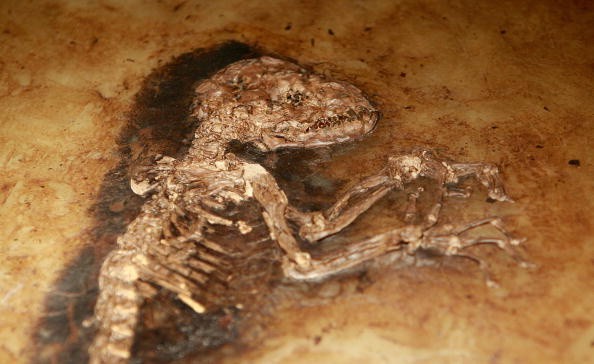Scientists have discovered two new species of burrowing animals that are mammal-like, and they existed about 120 million years ago in what is presently northeastern China. The new species are related distantly but independently develop traits to assist their digging lifestyle. They are representatives of the first 'scratch-diggers' found in this ecosystem.

Reason Animals Dig into the Soil
Jin Meng, lead author and also a curator in the American Museum of Natural History's Division of Paleontology said there are several hypotheses about the reason animals dig into the soil and live under the ground.
For safety against predators, to sustain a temperature that is relatively constant, not too hot during summer and not too cold during winter, or to discover food sources such as insects and plant roots. These two fossils are a very infrequent, deep-time instance of animals that are not related closely, and yet both developed the highly specialized features of a digger.
The Mammaliamorph Species
The fossil mammaliamorph species, which are predecessors to mammals, were found in the Jehol Biota, which are representatives of the Early Cretaceous epoch, around 145 to 100 million years ago. One is a mammal-like reptile known as a tritylodontid and is the first of its kind to be recognized in this biota.
Around one foot in length, it was named Fossiomanus sinensis (Fossio, "digging" and manus "hand;" sinensis, "from China"). The other was given the name Jueconodon cheni (Jue, "digging" -Chinese pinyin - and conodon "cuspate tooth"; cheni for Y. Chen, who made a collection of the fossil). It is a eutriconodontan, a far cousin of present placental marsupials and mammals, which were usual in the habitat. It is around 7 inches long.
Scratch Digging
Mammals that are acclimated to burrowing have specialized digging traits. The scientists discovered some of these hallmark characteristics - including limbs that are shorter, strong forelimbs with hands that are robust, and a short tail - in both Jueconodon and Fossiomanus. These features particularly point to a kind of digging behavior called "scratch digging," mainly accomplished by the claws of the forelimbs.
"This is the earliest evidence that is persuasive for fossorial life in those two groups," Jin said. "It also is the earliest case of scratch diggers we have knowledge about in the Jehol Biota, which was shelter to a great assortment of life, from dinosaurs to insects to plants."

Unusual Characteristic of these Animals
The animals also have another unusual characteristic in common: a vertebral column that is elongated. Generally, mammals possess 26 vertebrae from their neck to their hip. However, Fossiomanus possessed 38 vertebrae - a staggering 12 more than the usual state - while Jueconodon possessed 28.
To try to find out how these animals got their elongated trunks, the scientists turned to current studies in developmental biology, discovering that the variation could be due to gene mutations that direct the number and shape of the vertebrae when the animals' embryotic development begins. Variation in vertebrae numbers can be discovered in modern mammals as well, both in manatees, elephants, and hyraxes.
For more news, updates about ancient animals and similar topics don't forget to follow Nature World News!
© 2025 NatureWorldNews.com All rights reserved. Do not reproduce without permission.





